
Take-Aways:
Last week, we noted that the bulls might begin to fight back, and while equities closed lower on the week, the S&P 500 finished well off the lows. More interestingly, the S&P 600 was only slightly lower, and we are now looking for indications that the small caps will take a leadership position. The same cannot be said for the NASDAQ 100 which remains an underperformer. Commodities are holding support but must regain key moving averages to keep the secular trend alive. The bears remain in clear control of the 10-Year Note.
U.S. Equities
The S&P 500 closed lower on the week but well off the worst levels. The index remains below the declining 10 and 40-week moving averages, keeping the bearish trend in place. Below the moving averages and the 3,900 level, there is room for the pre-COVID highs, which could provide a fair amount of support. However, should 3,400 break, there could likely be a cascade down to the 3,000 level.
The 14-week RSI still has not become oversold during the recent price weakness.
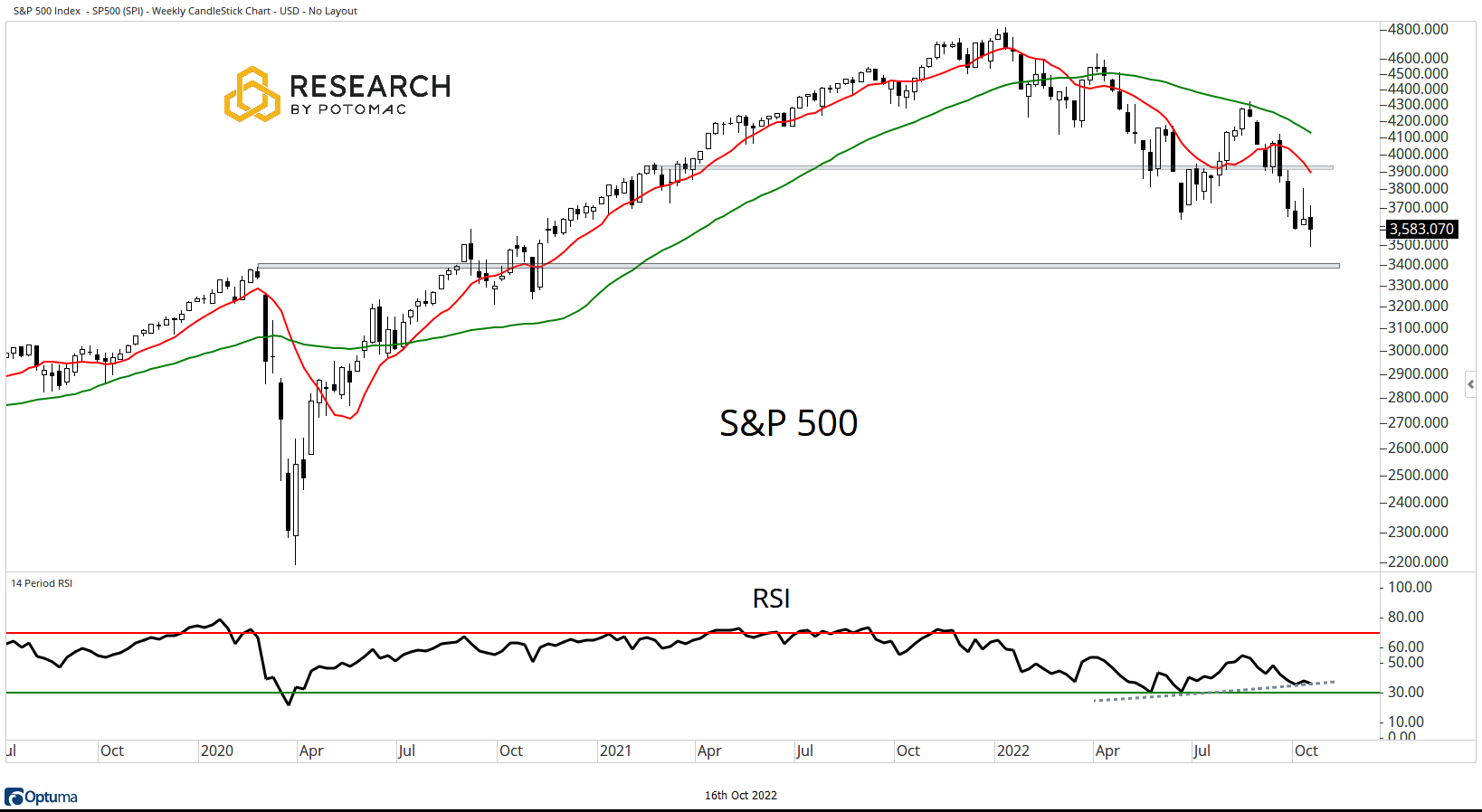
The S&P Small Cap 600 Index also closed lower on the week, though only slightly. The index continues to trade below the 10 and 40-week moving averages but is holding support in the 1,000-1,050 zone. Here too, the 14-week RSI has failed to become oversold during recent price weakness.
The relative trend improved on the week and now has eyes for a breakout. A move above the October/November 2021 peaks would set the stage for further outperformance.
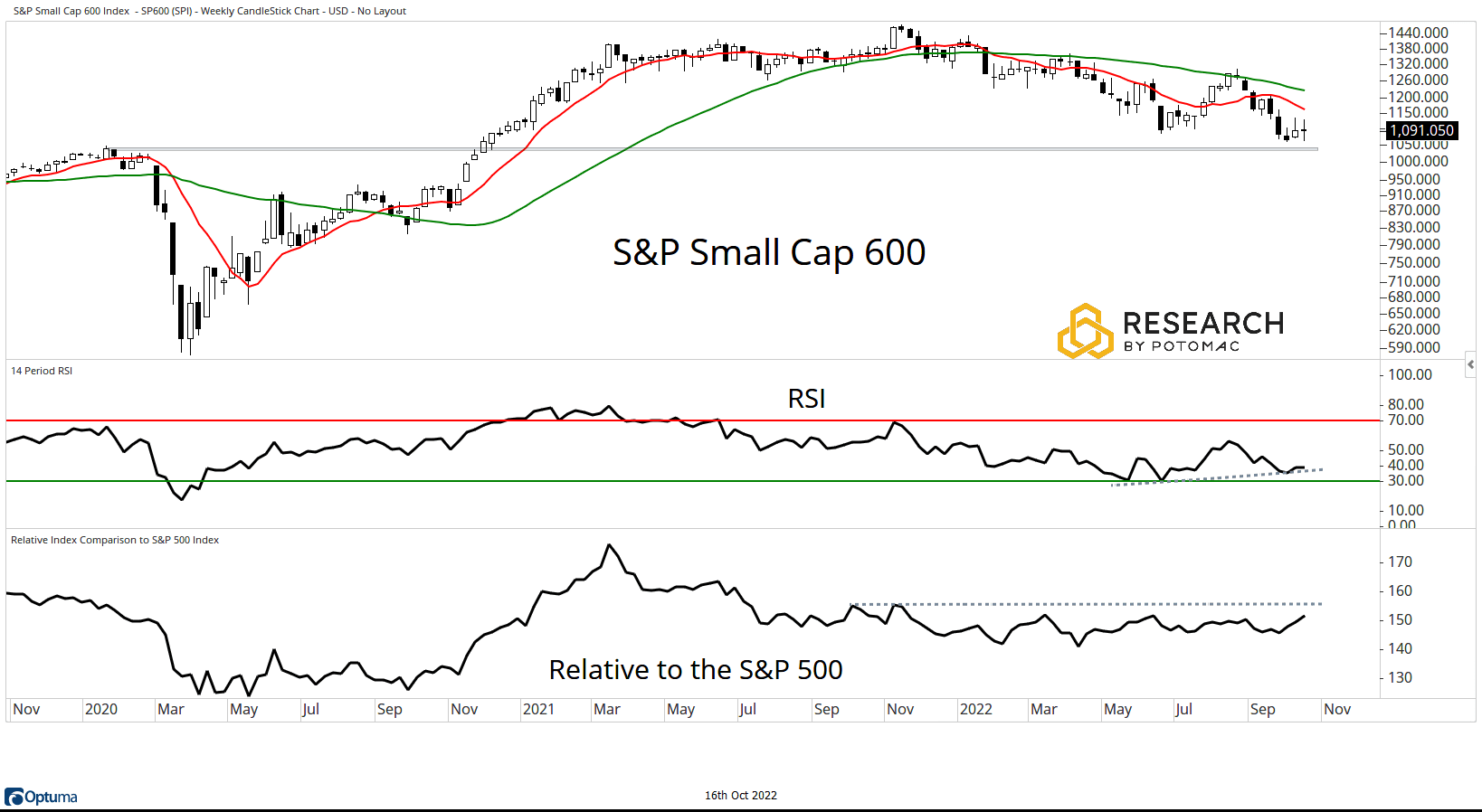
The NASDAQ 100 Index closed lower on the week and, in doing so, moved below support at the 11,000 level. The index trades below the declining 10 and 40-week moving averages, which must be eclipsed before a serious bullish case can be made.
The relative trend continues to trade below resistance and is heading lower. Odds favor continued underperformance.
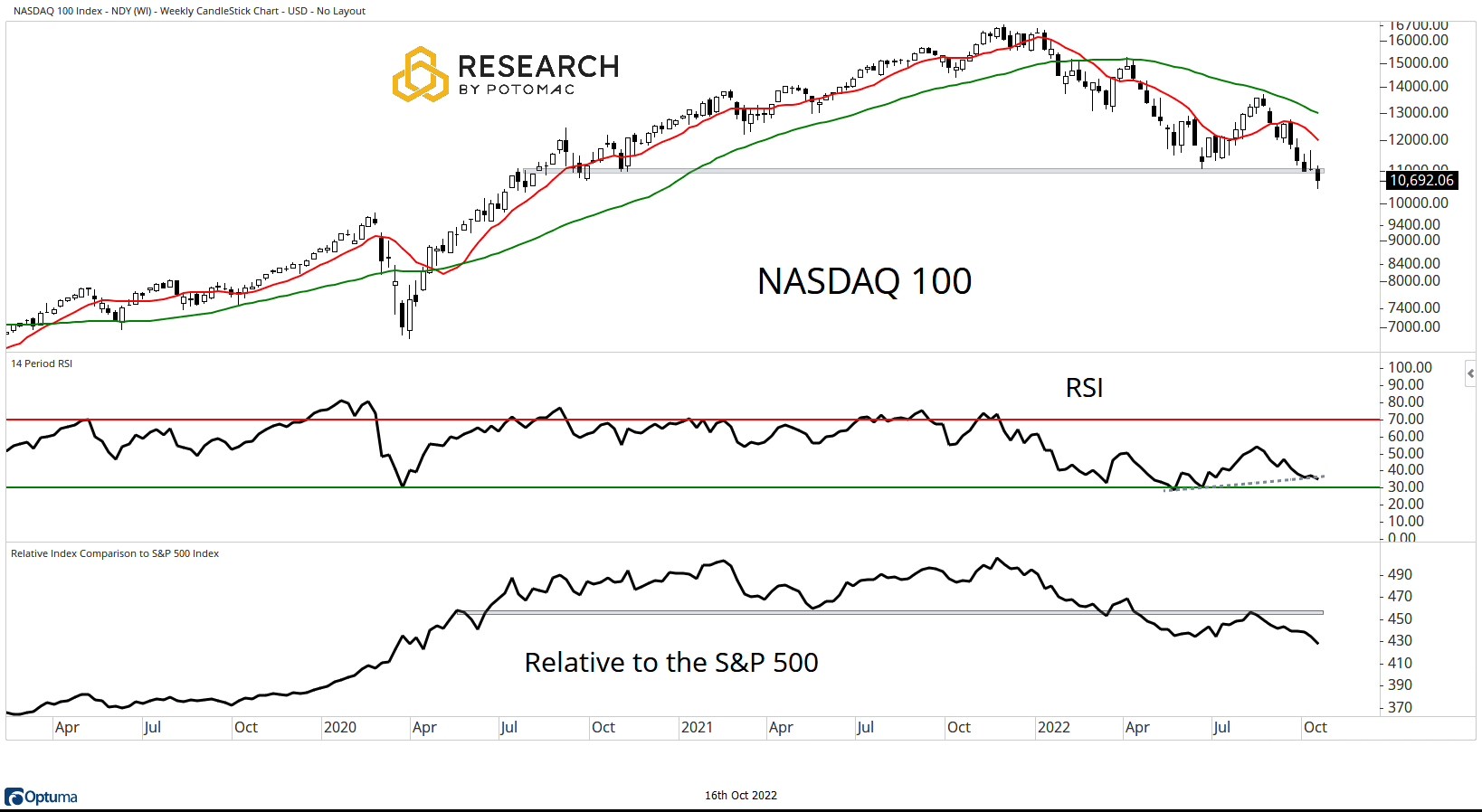
U.S. Fixed Income
The 10-Year Note closed lower once again last week, continuing the selloff that has been in place since key support at the 2018 lows was broken. The Note is trading below the declining 10 and 40-week moving averages to keep the bears in control of the match.
The yield remains above support at the 3.20% level, increasing the odds of a continuation to the upside.
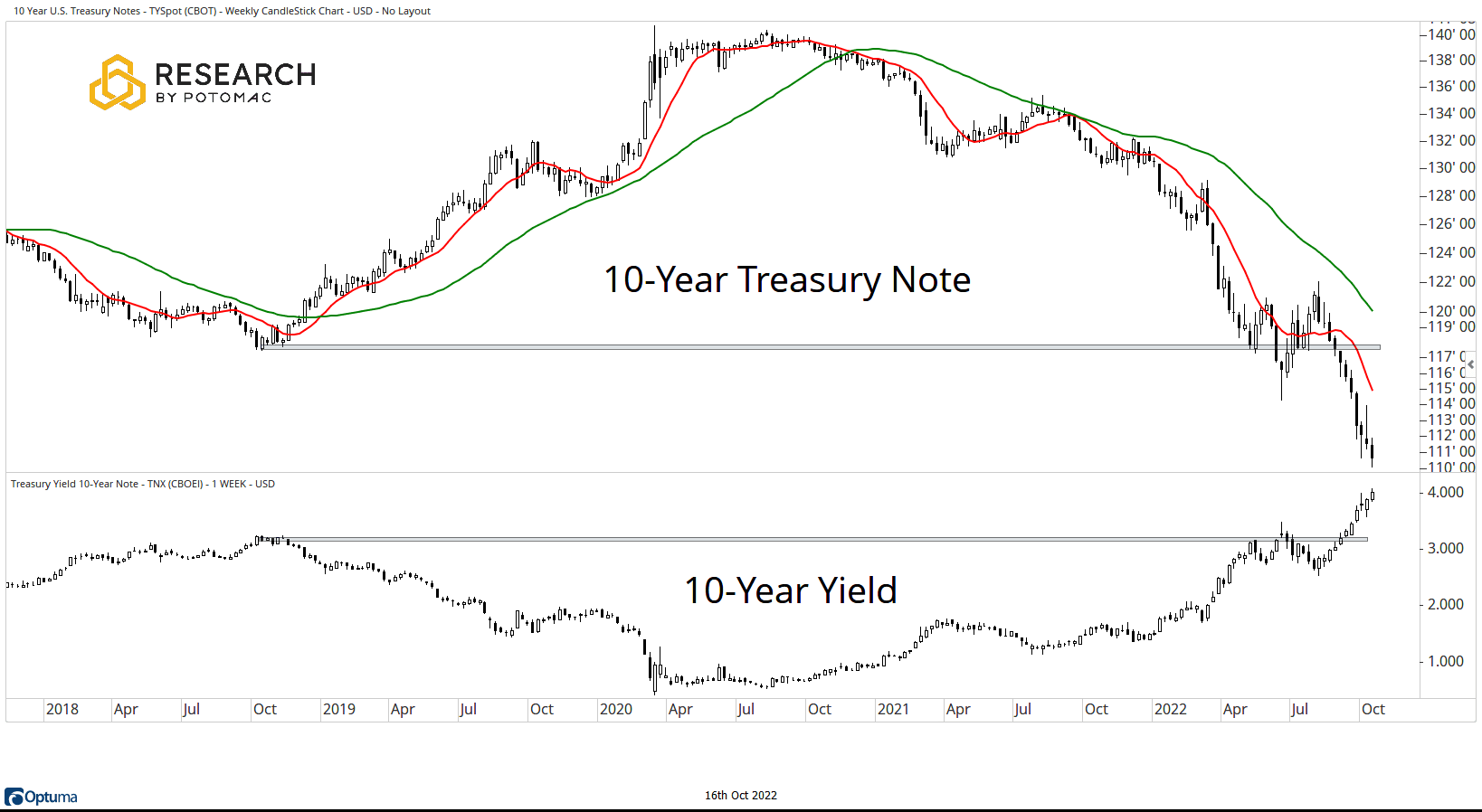
Global Equities
The Global Dow closed lower on the week, but the performance was more in line with what was seen in U.S. Small Caps. The index remains below support and the declining moving averages, so we are hard-pressed to make a bullish case. However, we are on the lookout for signs of stabilization. The 14-week RSI is trading near oversold levels and has been in a bearish regime since mid-2021.
The relative trend may be showing signs that a bottoming process is playing out. The ratio turned higher this week. A break of the trend from March 2021 could set the stage for further outperformance.
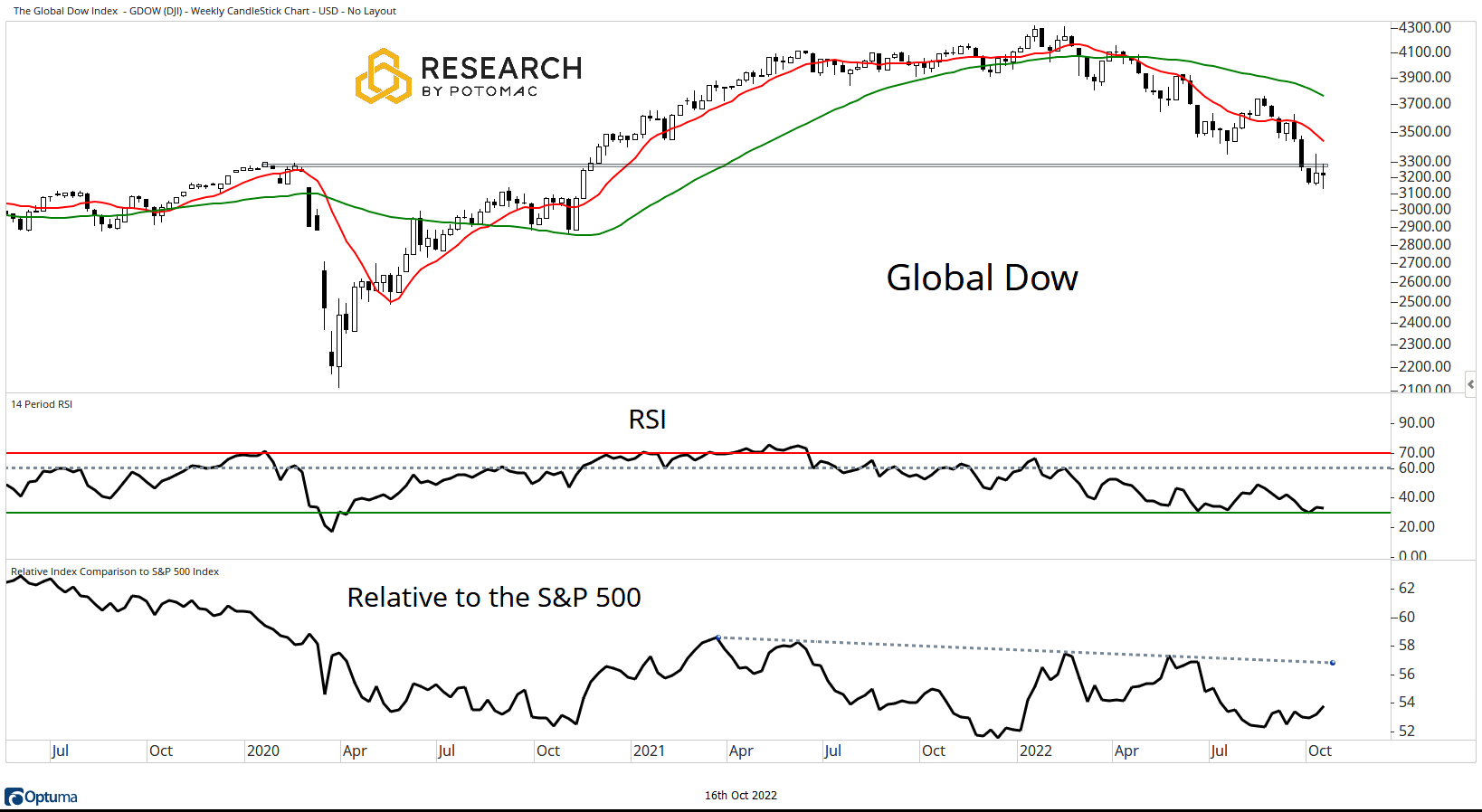
Commodities
The Bloomberg Commodity Index was not immune to selling pressure last week, but the index is holding key price-based support in the 106-110 zone. Breaking above the 10 and 40-week moving averages is an important next step to keep the secular bullish trend alive.
Momentum has also held a key level. The 14-week RSI is holding above 40, indicating that the bulls retain long-term momentum.
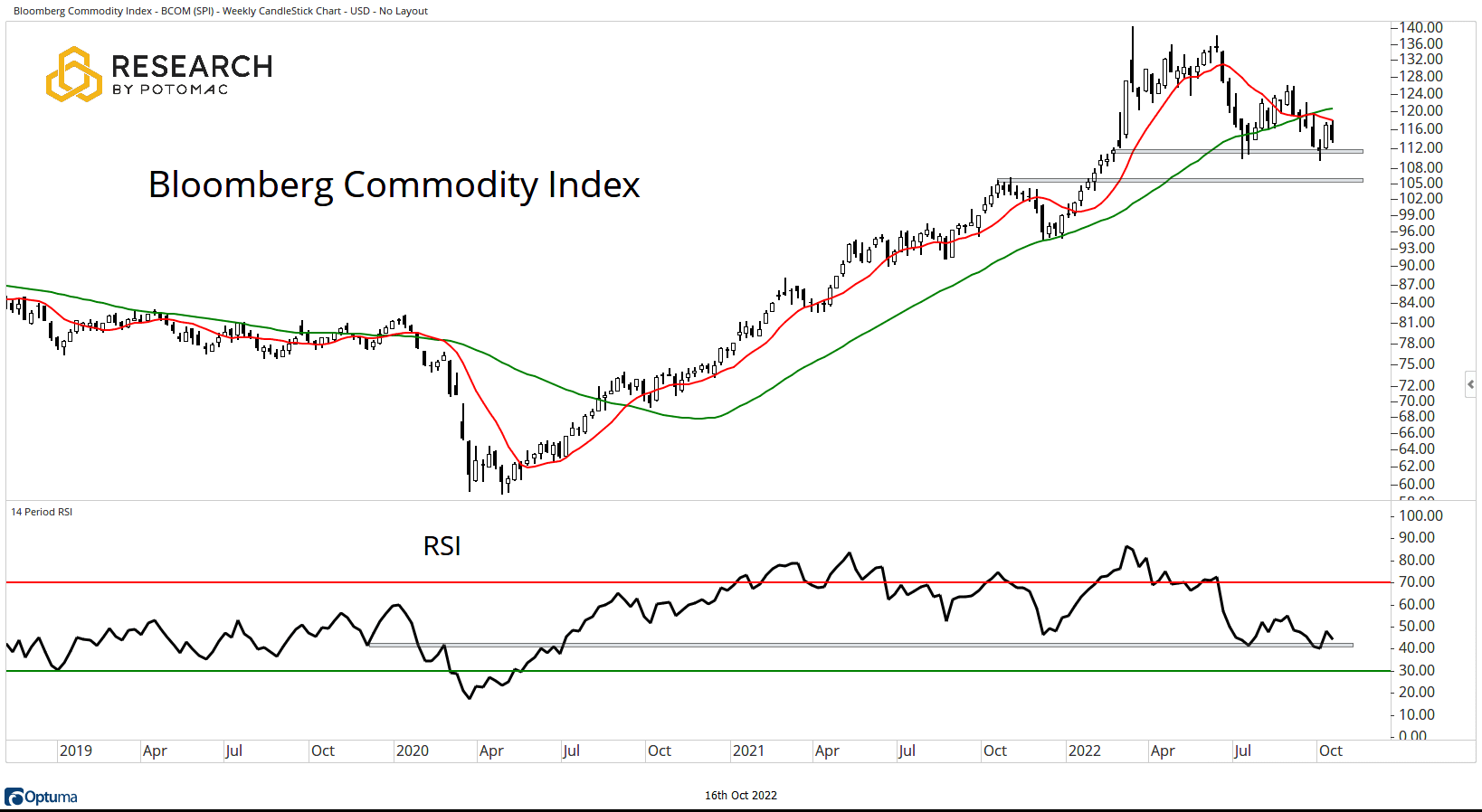
Potomac Fund Management (“Company”) is an SEC-registered investment adviser. This information is prepared for general information only and should not be considered as individual investment advice nor as a solicitation to buy or offer to sell any securities. This material does not constitute any representation as to the suitability or appropriateness of any investment advisory program or security. Please visit our FULL DISCLOSURE page. The company does not make any representations or warranties as to the accuracy, timeliness, suitability, completeness, or relevance of any information prepared by any unaffiliated third party, whether linked to the Company website or incorporated herein, and takes no responsibility for any of this information. The views of the Company are subject to change and the Company is under no obligation to notify you of any changes. Different types of investments involve varying degrees of risk, and there can be no assurance that the future performance of any specific investment or investment strategy will be profitable or equal to any historical performance level.
